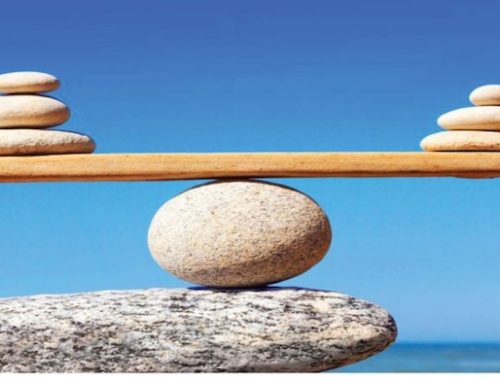In addition to solitude summits (Part I of this series) that are designed to affect a deep and honest questioning of one’s knowledge, beliefs, and circumstances, another beneficial practice to steel thyself is mindful meditation and embracing the present moment. The simple fact that you are reading this post qualifies you as someone who cares; who possesses a moral compass seated in your cognetic system. The current Age of Deceit in America is likely disconcerting to you and may have even tipped you from moral outrage into a period of moral suffering. As the Zen priest, Roshi Joan Halifax argues in her book, Standing at the Edge, “when we are angry and emotionally aroused, we begin to lose our balance and our ability to see things clearly, and we are prone to falling over the edge into moral suffering.” Moreover, such disorientations that arise from suffering make us vulnerable to the deceits and nefarious techniques like gaslighting regularly deployed by perpetrators like Donald Trump who seek to exploit us and oppress us. Practicing mindfulness contributes to clarity in the here and now, fosters openness to affect creative liberation, and strengthens our focus to discern truth from deceit. A clear vision and a strong mind/heart/body connection is fundamental to steeling thyself. Practicing mindful meditation affords a time out from the deluge of distractions that degrade our capacity to recognize truth and find purpose in the present moment, which is the only moment that matters.
I have been accused of having the mind of a Border Collie: in a state of constant stimulation. If your disposition is similar, quieting the mind to develop awareness of consciousness while suspending judgment can pose a significant challenge. Nevertheless, having the tenacity of a Border Collie also portends the capacity and discipline to succeed in chosen tasks which, at the very least, is a useful delusion when it comes to practicing mindfulness. (I am, therefore, I can!) As with solitude summits, practicing mindfulness is harder than it sounds, but also holds extraordinary benefits from simple relaxation to mind-expanding clarity. Think of it as you might working out to strengthen your body; mindfulness meditation aims to enhance your quality of mind—to strengthen the head and heart connection that comprise the cognetic system—the nexus of wisdom and morality that frames our soul. The neuroscientist, atheist, and author, Sam Harris also suggests that “cultivating this quality of mind has been shown to reduce pain, anxiety, and depression; improve cognitive function; and even produce changes in gray matter density in regions of the brain related to learning and memory, emotional regulation, and self-awareness.” There exists power in simplicity, and mindfulness is, simply, “clear awareness.”
Fortunately, mindfulness training is now much more accessible than travelling to the Far East to sequester oneself for days at a time in a state of mute deprivation under the watchful eye of a Buddhist monk, or subjecting oneself to either synthetic or organic narcotics—however effective—before the myriad of research issues associated with their use are available to determine appropriate formulation and dosing. LSD, psilocybin, ayahuasca, and MDMA (Ecstasy) hold the potential for a number of breakthroughs in alleviating suffering and expanding mental acuity but, as journalist Michael Pollan argues in his groundbreaking personal and journalistic research in How to Change Your Mind, mind manifestation through the use of psychedelics remain in the pioneering stages today due, in no small part, to their politicization in the 1960s that shut down further research as President Nixon tied them to the political threat of counterculture hippies, which resulted in psychedelics’ unlawful status and a research gap that is only lifting, slowly, today. In the meantime, there are apps like “Calm” and Sam Harris’ “Waking Up” that provide streaming meditative tutorials and sessions to affect conditioning of the consciousness. As with physical conditioning, benefits of meditative mindfulness are only available to those with the discipline to do it!
Stated simply, meditative mindfulness is the practice of focusing one’s consciousness on the realities of the present moment, while suspending judgment of those thoughts that appear and recede. As the Buddhist monk, Thich Nhat Hahn teaches, meditation begins with relaxation and its end-game is the realization of a “tranquil heart and clear mind.” As a novice myself, I can attest to the fact that achieving a relaxed but concentrated state of pure awareness is, in itself, an accomplishment of significant benefit. Relaxing the body and clearing the mind—preferably daily—produces a welcome sense of calm. The “Calm” and Waking Up” apps offer daily meditations that generally last around ten minutes. Once you become proficient in these short meditative sessions (which will seem long in the beginning but will eventually seem more like two minutes than ten), you can advance to significantly longer and more involved sessions. As Thich Nhat Hahn suggested, “In the first six months, try only to build up your power of concentration, to create an inner calmness and serene joy. You will shake off anxiety, enjoy total rest and quiet your mind. You will be refreshed and gain a broader, clearer view of things, and deepen and strengthen the love in yourself. And you will be able to respond more helpfully to all around you.”
Sam Harris underscored the importance of living in the present moment with the observation that “The reality of your life is always now. And to realize this … is liberating. In fact, … there is nothing more important to understand if you want to be happy in this world.” For my own mental health, I like to think of the present moment as my refuge from all those things that bring me worry—that are of deep concern, but are either in the past or future. Just take a moment and enjoy the now.






